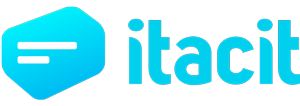Companies like yours and mine have reinvented work from home policies to accommodate federal, state and provincial mandates for social distancing, and focus on managing your remote workforce.
Four weeks in, we’re doing a gut-check as to how it’s progressing.
How does remote work affect communication and engagement? How do you manage a temporarily remote workforce? Well, that depends on the tools and processes that are in-place.
I’m writing to you as a long-time remote employee. I first moved to remote work when the company I worked for was acquired and I was promoted to a position at head-office which was over 1000 kilometres away. I’ve since moved on and several positions later, I still primarily work from home. Working remotely works for me, but that’s not the conversation today.
Today’s conversation isn’t about the individual employee specifically, but rather how a workforce stays connected when workers are remote. How do you ensure consistency messaging across the board and keep teams motivated to do their best?
Remote work is different, for sure.
This Harvard Business Review article sums up what makes remote work so different pretty perfectly, so I’m just going to give you a high-level overview of the key points:
-
- Working at home is a different environment
- Lack of socializing and feelings of isolation
- Information isn’t as easily accessed
- Communication problems
- No supervision
Companies can find a spread out workforce tricky to manage, hard to connect with and scary to monitor.
But, when done correctly, remote work can be even more productive than typical situations: Statistics have proven that to be true!

Dispelling the myths of working from home.
Those that have been recently initiated into the working from home team have likely witnessed first hand that just because the kitchen or apartment doubles as an office, it doesn’t mean less productivity.
The experts at HubSpot have put together an excellent look at the myths surrounding remote work. Here’s a quick rundown of what their conclusions:
-
- Remote workers actually work more than the employee!
- They’re not all lonely because they work remotely. In fact, many find more meaningful ways to communicate while working from home.
- Remote workers learn a healthier approach to work-life balance.
- You CAN manage employees if you’re the remote worker, thanks to advances in software and services.
Remote work can be a valuable stand-in for typical work situations. And, it may even become a much better choice than going back to how it was!
Remote workers need to feel connected.
When employees are set up with the best tools and services, it’s easy to see how productivity for those who work from home is less of a concern than ever before.
Number one – and sources agree – is the tech.
Because remote work is stitched together by apps and the internet, making sure that your workforce has the proper stack is the core of any WFH (work from home) approach. Aside from a good monitor, desk and wi-fi connection, tools that enable communication and continued project work are essential.
Any suite of services or software should address the key needs of any remote worker.
Think along the lines of:
-
- Messaging, both on mobile devices and desktops
- Notice boards and update posts
- Feedback tools that allow ‘likes’, shares and comments
- Surveys to gauge where everyone is at
- Learning software
- A resource library to find all of your important PDFs, docs and more!

It’s just another learning curve
Splitting up the office temporarily doesn’t have to be a challenge.
Instead, see it as an opportunity to showcase everyone’s capabilities while practicing some self-care and flexible scheduling. And it doesn’t have to be that different!
If you are ready to connect your workforce now, when it matters – let’s talk.












